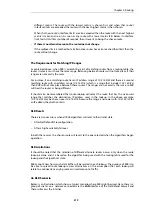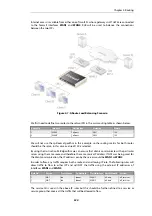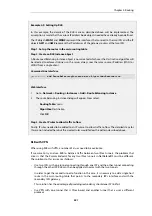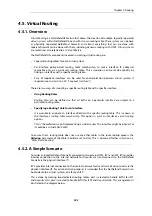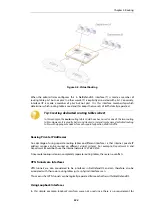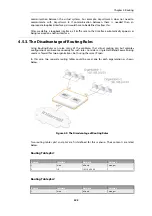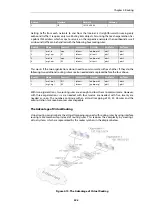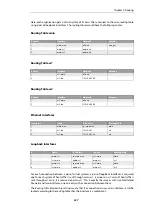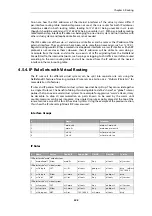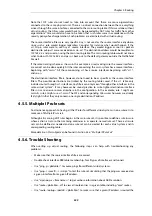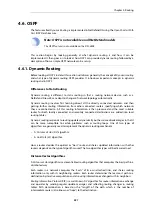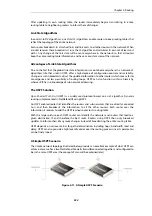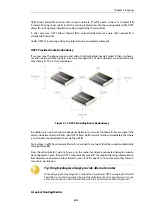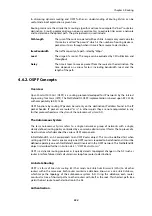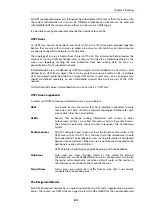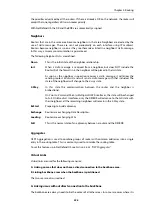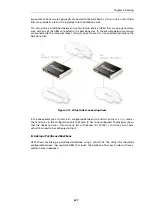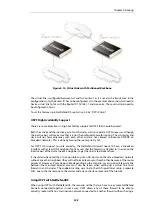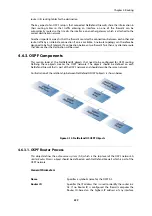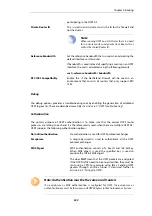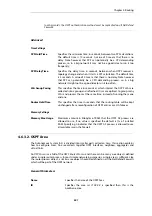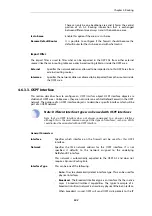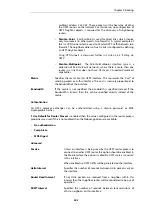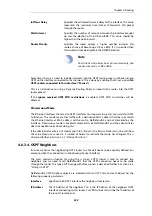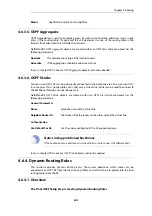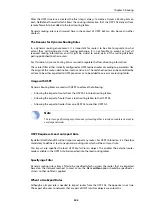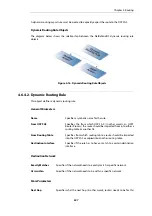
After updating its own routing table, the router immediately begins transmitting its entire
routing table to neighboring routers to inform them of changes.
Link State Algorithms
In contrast to DV algorithms,
Link State
(LS) algorithms enable routers to keep routing tables that
reflect the topology of the entire network.
Each router broadcasts its attached links and link costs to all other routers in the network. When
a router receives these broadcasts it runs the LS algorithm and calculates its own set of least-cost
paths. Any change of the link state will be sent everywhere in the network, so that all routers
keep the same routing table information and have a consistent view of the network.
Advantages of Link State Algorithms
Due to the fact that the global link state information is maintained everywhere in a network, LS
algorithms, like that used in OSPF, offer a high degree of configuration control and scalability.
Changes result in broadcasts of just the updated information to other routers which means faster
convergence and less possibility of routing loops. OSPF can also function within a hierarchy,
whereas RIP has no knowledge of sub-network addressing.
The OSPF Solution
Open Shortest Path First
(OSPF) is a widely used protocol based on an LS algorithm. Dynamic
routing is implemented in NetDefendOS using OSPF.
An OSPF enabled router first identifies the routers and sub-networks that are directly connected
to it and then broadcasts the information to all the other routers. Each router uses the
information it receives to add the OSPF learned routes to its routing table.
With this larger picture, each OSPF router can identify the networks and routers that lead to a
given destination IP and therefore the best route. Routers using OSPF then only broadcast
updates to inform others of any route changes instead of broadcasting the entire routing table.
OSPF depends on various metrics for path determination, including hops, bandwidth, load and
delay. OSPF can also provide a high level of control over the routing process since its parameters
can be finely tuned.
A Simple OSPF Scenario
The simple network topology illustrated below provides an excellent example of what OSPF can
achieve. Here we have two NetDefend Firewalls A and B connected together and configured to
be in the same OSPF area (the concept of
area
will be explained later).
Figure 4.11. A Simple OSPF Scenario
Chapter 4: Routing
332
Summary of Contents for NetDefendOS
Page 30: ...Figure 1 3 Packet Flow Schematic Part III Chapter 1 NetDefendOS Overview 30 ...
Page 32: ...Chapter 1 NetDefendOS Overview 32 ...
Page 144: ...Chapter 2 Management and Maintenance 144 ...
Page 284: ...Chapter 3 Fundamentals 284 ...
Page 392: ...Chapter 4 Routing 392 ...
Page 419: ... Host 2001 DB8 1 MAC 00 90 12 13 14 15 5 Click OK Chapter 5 DHCP Services 419 ...
Page 420: ...Chapter 5 DHCP Services 420 ...
Page 573: ...Chapter 6 Security Mechanisms 573 ...
Page 607: ...Chapter 7 Address Translation 607 ...
Page 666: ...Chapter 8 User Authentication 666 ...
Page 775: ...Chapter 9 VPN 775 ...
Page 819: ...Chapter 10 Traffic Management 819 ...
Page 842: ...Chapter 11 High Availability 842 ...
Page 866: ...Default Enabled Chapter 13 Advanced Settings 866 ...
Page 879: ...Chapter 13 Advanced Settings 879 ...


